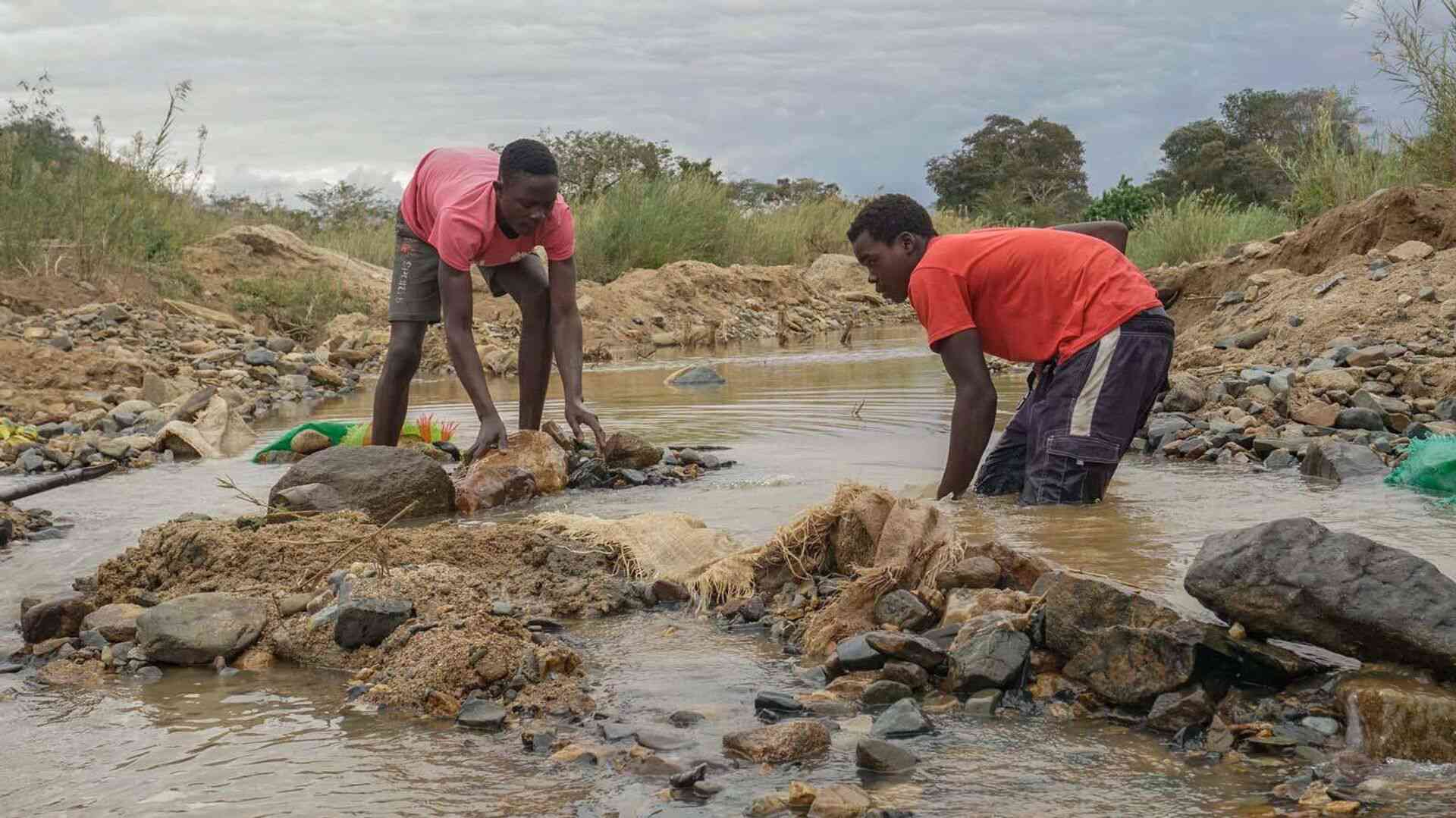
SINCE the conflict between Russia and Ukraine began in February 2022, Western nations and their allies have imposed up to 16 500 different types of sanctions on Russia.
The ability of Russian banks to participate in global financial activities was heavily restricted, their ships were also prohibited from accessing European ports, whilst Russian oil was subject to price caps, which implied that Western countries would only buy the oil if its price is below US$60 per barrel (world prices currently fluctuate between US$80 and US$100).
These responses were meant to make Russian industries and its government disintegrate (breakdown).
Western countries and their allies were also prohibited from selling military equipment to Russia, including dual-use goods, which serve both military and civilian capabilities such as; semiconductors, navigation systems, certain types of electronics and metals, etc.
This was and still is for fear that the dual-use goods would end up being used to build missiles, bullets, and battle field motor vehicles, which would be used in the war with Ukraine.
Russia’s central bank has had its cash, which was banked in Western countries confiscated. The cash (foreign reserves) amounts to a huge US$350 billion, which is about half of the central bank's total foreign currency reserves.
It is the normal practice of central banks to keep their foreign reserves or even gold in other countries as the Russian central bank did.
However, it is a break from tradition for central banks to lose their reserves in the manner in which the Russian central bank did, even amidst controversial wars, as the Ukraine conflict.
- Lukaku becomes the most expensive player ever
- Lukaku becomes the most expensive player ever
- Ukraine's Zelenskiy warns Europeans to brace for bleak winter
- Ben Stiller and Sean Penn latest Americans banned from Russia
Keep Reading
The initial effects of the reprisals by the Western countries led to a sharp depreciation of the Russian currency (the ruble), whilst economic activity in the country contracted by 1,2% in 2022 (compared to the previous year).
However, Russia was well prepared for many of such retaliations. For example, it is still making weapons, such that it overmatches Ukraine in artillery (guns, mortar bombs, rocket grenades, etc) by a ratio of 3:1. Russian oil is still being sold above the price restriction of US$60 per barrel, with some of it ending up in the same discordant Western countries.
Other goods such as minerals (gold, diamonds, etc) are also ending up in the West, as they are being sold through third-party countries, etc.
Due to such resilience, in 2023, Russia's economy grew by 3,6%, which was much higher than the United States (US), United Kingdom (UK) and several nations in the European Union (UE).
This year, it is also estimated to grow by 3,6% again, which will once more be higher than the US and several Western nations.
Russia is still under immense pressure, however. Although its economy has not collapsed, its GDP (level of economic activity) is still around 7% less than the pre-war forecast. Nevertheless, it has managed to withstand both the war and economic attacks against itself from the West, and for longer than many would have anticipated.
In that regard, it is essential to study how it has responded to resistance and isolation by Western countries, whilst also realising greater economic growth than those countries (the West), in the process.
What it did
Due to the war, Russia has militarised its economy. The Russian government has been spending record amounts on financing the manufacturing of missiles, planes, bullets, powerful artillery, armoured vehicles, recruitment of soldiers, paying injured soldiers, compensating the families of dead fighters that have succumbed to the war, reconstructing the territory, which was occupied from Ukraine (building schools, roads, homes for citizens, etc), etc.
Around 40% of the government's budget now finances the war effort, something, which was unheard of since the fall of the Soviet Union (in 1991).
Government spending on defence has surpassed social spending (education and healthcare). Factories, which make military equipment, are receiving the greatest portion of the increased budget expenditure.
Consequently, the military industries are recruiting record numbers of employees. Around 520 000 new jobs have been created in the military industries since the start of the war, and the sector is now employing around 3,5 million Russians in total, or 2,5% of the population.
Some factories are operating for 24 hours, with at least two-12-hour shifts, where night-time employees replace daytime workers. Reports state that other industries are being run by fiat (authoritatively) whereby, even some workers rights have had to be suspended, for the good of the economy and national security.
Although not effectively confirmed, some reports indicate that students, convicts (prison inmates) or even forced labour can be brought into the factories in order to provide extra work force.
A failure to deliver government orders pertaining to weaponry can lead to criminal charges being laid on executives and staff of the relevant manufacturing companies.
Unemployment is now at a record low of only 2,9%. The heavy government expenditure has driven strong economic growth. The poor who are working in military factories and as soldiers at the battlefront are now more affluent than before.
In fact, wages have grown sharply for employees in the military industries, than for all other sectors of the economy (education, healthcare, etc).
Since the Russian government has been greatly responsible with finances before the war, its ratio of government debt to GDP (total yearly economic activity) is at a very lowly 15%.
This means that the country can afford to finance the war, even through several years of further government borrowing, probably longer than what Ukraine and its allies can afford (in terms of duration of years).
For a better perspective, the US, UK and Germany, for example, have a government debt-to-GDP ratio of 123%, 98% and 64%, respectively. Their ratios are higher because their governments continually borrow much more than Russia's government has been doing in preceding years.
In order to deal with the possible shortage of US dollars and other foreign currencies, the Russian government introduced controls, which manage how exporters take their earned foreign currency outside of the country.
For all institutions in Russia, making non-critical payments destined outside of the country, is heavily restricted. The banking sector is mostly approving foreign payments for critical imports, which are essential for the operation of the economy.
Since foreign payments are heavily controlled, the foreign exchange (foreign currencies) needed to fund critical imports is widely available. This has worked to ensure that the local currency (Russian Ruble) retains a stronger value than what it could have been worth, if there were no restrictions on foreign currency outflows.
Both the Russian government and the private sector are reported to have invested in "dark" (secretive) ships, which are able to transport and deliver goods to European ports, without being denied access.
So Russian oil and other commodities (coal, platinum, diamonds, wheat, maize, etc) is still being sold to Europe and the USA, although it now costs more because of the diversion from traditional trade routes and practices.
Russia has also developed closer ties with "Global South" allies such as China, India, Turkey, North Korea, Iran, Serbia, etc. The allies continue to supply it with some critical goods which the West have determined to withhold from Russia. It is also now China's largest oil supplier.
The Russian population is also continually raising funds for various initiatives to provide for the army.
Lessons for developing countries
Developing countries would do well to reduce their government debt, so that they also have a lower government debt-to-GDP ratio, just like Russia's 15%. This is because lower government debt implies that the country will have more room to respond to critical situations in the future, which may require government borrowing in order to manage them.
These include natural disasters such as droughts and floods, or even global economic challenges such as a fall in the demand and prices for commodity exports such as platinum, chrome, gold, etc.
A higher government debt reduces the ability of government to borrow when there is a national crisis, thus, it is not desirable. The huge government debt reduces the creditworthiness (trustworthiness with regards to debt) of a government and makes it harder for it to borrow more funds, especially at reasonable (low) interest rates.
Additionally, reasonable foreign exchange controls (regulations) can go along way to ensure that foreign currency is abundantly available (domestically) and the local currency does not lose its value.
The same laws can also result in economic growth as locals will increasingly prefer to use their foreign currency domestically, leading to greater domestic economic activity.
If possible, four (or less) major freight forwarding and customs clearing companies can be established to handle all imports of a reasonably high value (perhaps of over US$3 000).
This would reduce the smuggling of goods through the borders and ensure that the government gets all duty accruing to it for imported items.
If the aforementioned importing companies fail to handle the citizens' goods appropriately, they will be needed to completely reimburse their clients.
Ideally, the importing companies can charge only 1%- 5% commission for their services, with lower charges being applied for higher value imports. Quotas (limits) can also be placed on the importation of non-critical goods, with some imports being outlawed completely, if they are locally available (locally manufactured) and if they are within roughly the same price range as local products.
Such an arrangement might also reduce local demand for foreign currency, which is good for the national currency.
Foreign allies should be turned into economic partners. Zimbabwe, for example, should encourage two-way investment and scientific research between itself and its allies, such as China, Russia, India, South Africa, etc.
Although such approaches are already being embraced, they will need to be accelerated, if any material benefits are to be realised from the relationships.
Joint research in professional sectors such as industrial, agricultural and technological advancements will likely be more beneficial than scholarships for tertiary students.
The government's budget and policies should be tailored to address the most problematic issues, ahead of all others.
This means, after every few years, the budget will be reflecting the latest local challenges, through a larger commitment of funds towards addressing the pressing problems of the time.
Just as Russia adjusted its national budget to spend more towards the war, Zimbabwe will need to adjust its own (budget) so that it responds to the most pressing local challenges.
In Zimbabwe, such challenges include; poverty, unemployment, increased frequencies of droughts, unstable local currency, filthy city centres, etc.
For example, the next five years may be dedicated towards providing intermittent cash payments (social grants) to the vulnerable in society (disabled, pensioners, rural dwellers), in order to provide for their basic needs and to stimulate domestic economic growth through an increase in demand for goods and services arising from the cash payments.
Resilient export industries are essential in order to build a strong and stable economy. In the case of Russia, its oil and platinum exports have proven indispensable in the global market, such that not even sanctions from the West could shut down the country's trade.
Countries, such as Zimbabwe, will need to also leverage their natural resources to build resilient export industries. Local platinum, chrome, gold, diamonds, etc, can be traded directly with buyers in consuming countries, instead of in international markets located in London, New York, Frankfurt, for example.
Direct sales to consumers would result in higher revenues for local products. Also, the country should incrementally invest in value addition so that it sells high-value goods instead of raw materials.
- Tutani is a political economy analyst. — tutanikevin@gmail.com










